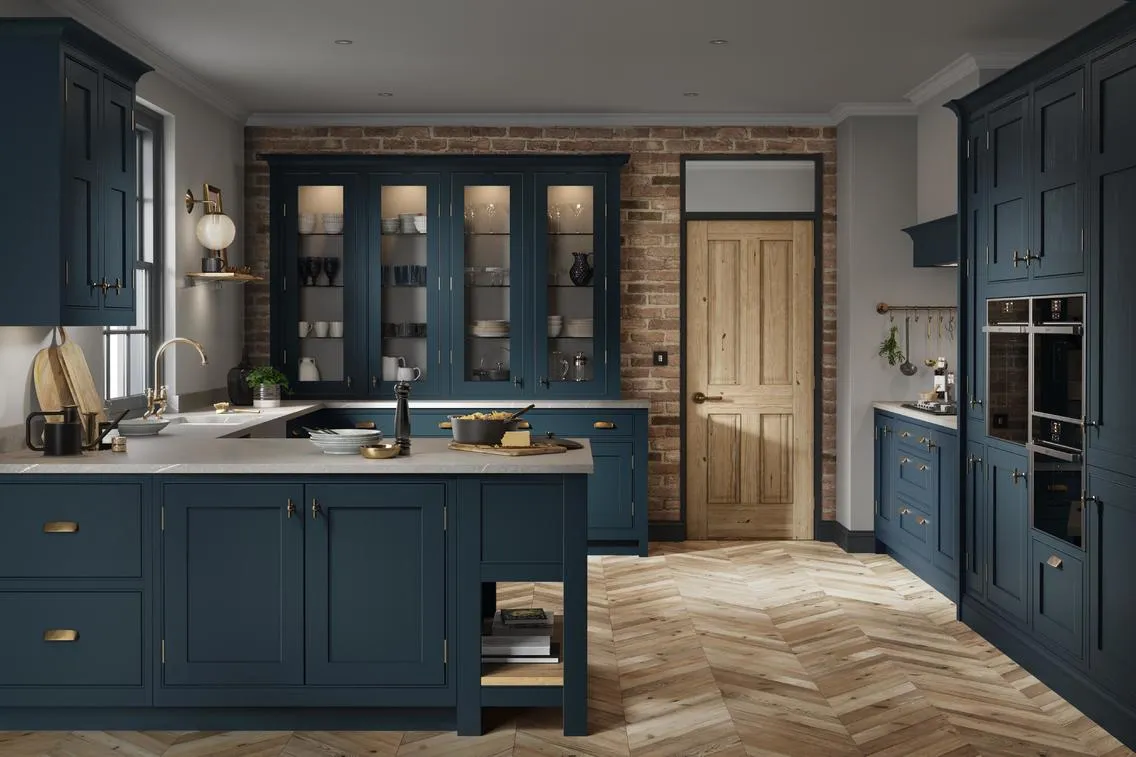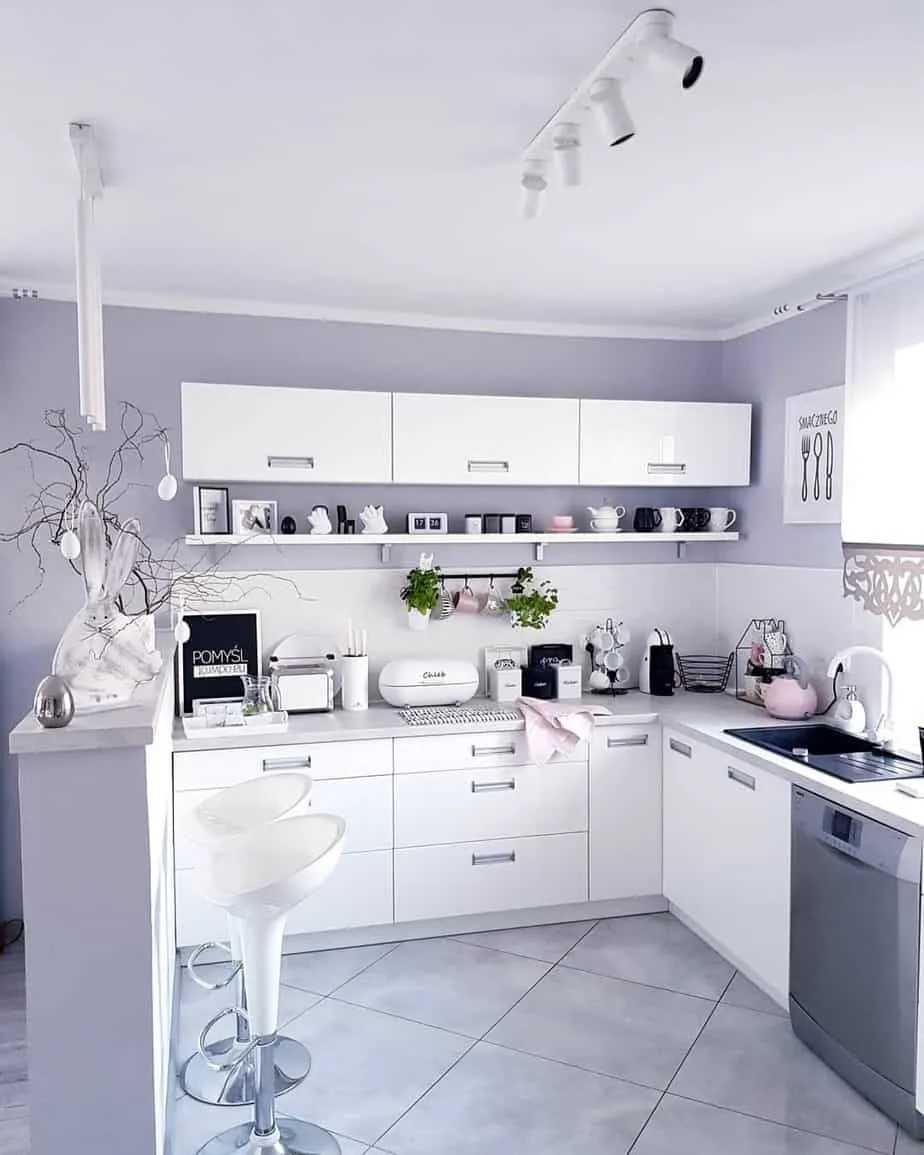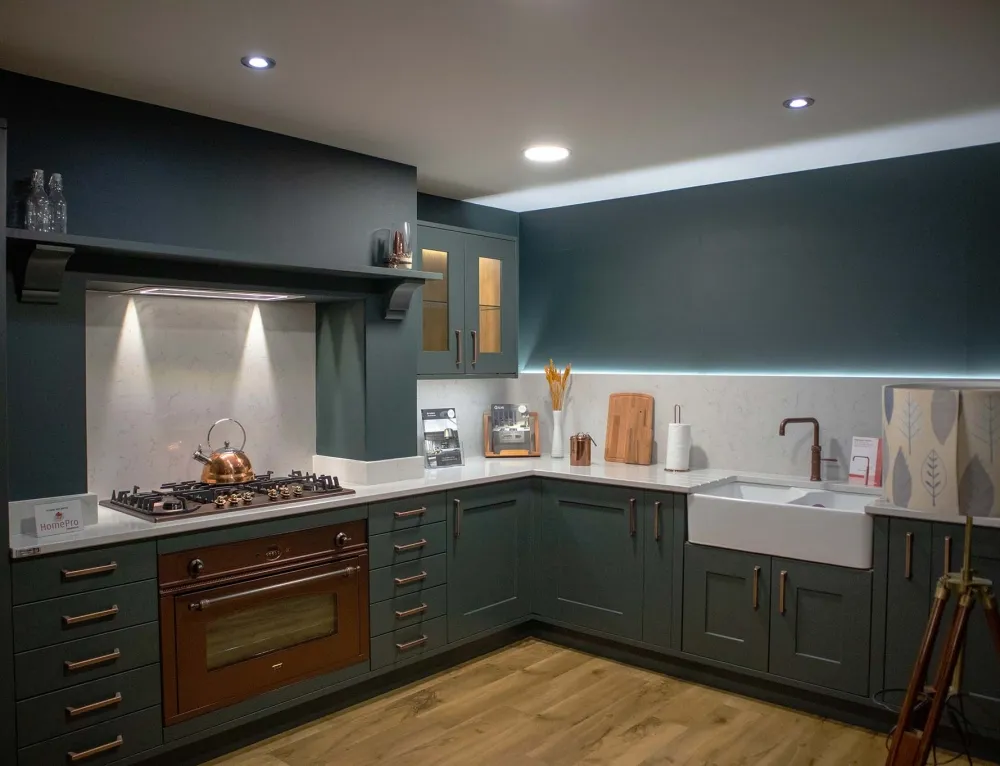Modern Kitchen Design
Modern kitchen design has been a leading trend in the UK, prioritizing clean lines, sleek surfaces, and a minimalist approach. This style often features handle-less cabinets, integrated appliances, and a neutral color palette, providing a streamlined and uncluttered look. The use of high-gloss finishes, stainless steel, and glass adds a touch of sophistication. Functionality is key, with clever storage solutions like pull-out drawers and integrated organizers maximizing space and efficiency. The overall aim is to create a kitchen that is both visually appealing and highly practical, reflecting a contemporary lifestyle. This design philosophy is not just about aesthetics; it is about creating a space that enhances the cooking experience and offers a calming and organized environment for the homeowner. The modern kitchen represents a shift towards simplicity, efficiency, and a strong focus on the user’s experience within the space.
Minimalist Kitchen Decor
Minimalist kitchen decor complements modern design, advocating for ’less is more.’ This trend focuses on decluttering and simplifying the space to create a serene and functional environment. Key elements include a limited color palette, often incorporating whites, grays, and natural wood tones. This approach emphasizes the beauty of simplicity, with a focus on essential items and strategic storage to hide clutter. The absence of unnecessary ornamentation creates a sense of calm and order, making the kitchen feel spacious and inviting. Minimalist kitchens often feature hidden appliances, flush cabinets, and sleek countertops, enhancing the streamlined aesthetic. The goal is to create a space that is not only visually appealing but also promotes a sense of peace and tranquility, making it an ideal setting for both cooking and socializing. This trend is about creating a sanctuary within the home, where functionality and aesthetics blend seamlessly.
Open Shelving

Open shelving is another popular trend, offering a blend of functionality and style. Instead of upper cabinets, open shelves display kitchen essentials like cookware, dishes, and decorative items. This design choice creates an airy and spacious feel, making the kitchen appear larger and more inviting. It also allows for easy access to frequently used items, enhancing convenience. However, careful planning and organization are essential to prevent the shelves from looking cluttered. Selecting attractive items to display and arranging them thoughtfully is key to achieving a balanced and visually appealing look. Open shelving can be incorporated in various kitchen styles, from modern to traditional, adding a touch of personality and warmth. This trend encourages a curated display of kitchen items, turning everyday objects into decorative elements. The visual openness and the opportunity to customize the display make it a favorite for those who love to showcase their kitchenware and personal style.
Incorporating Natural Materials
The use of natural materials like wood, stone, and bamboo has grown in popularity. These materials bring warmth, texture, and a sense of organic beauty to the kitchen. Wooden cabinets, countertops, and flooring add a touch of nature and create a welcoming atmosphere. Stone, such as granite or marble, offers a luxurious and durable surface, adding elegance and sophistication. Bamboo, known for its sustainability and durability, is an excellent choice for flooring or decorative elements. These materials not only enhance the aesthetic appeal of the kitchen but also promote a sense of well-being and connection with nature. Incorporating natural elements can be achieved through various design choices, from selecting wooden accents to installing stone backsplashes. The goal is to create a space that feels grounded, inviting, and in harmony with the environment. The use of these materials adds a tactile quality, making the kitchen a more sensory and enjoyable space.
Adding Greenery
Adding greenery, such as indoor plants and herbs, is a simple yet effective way to bring life and freshness to your kitchen. Plants not only enhance the visual appeal but also purify the air and create a more welcoming environment. Herbs, such as basil, rosemary, and mint, can be grown in pots and used for cooking, adding both beauty and utility to the kitchen. Various types of plants can be chosen to suit the style of the kitchen. From small succulents on countertops to larger potted plants on the floor, greenery can be incorporated in numerous ways. The presence of plants adds a natural element that contrasts with the hard surfaces of the kitchen, creating a balanced and harmonious design. This trend promotes a sense of well-being, making the kitchen a more pleasant and enjoyable space for cooking and spending time. It provides a connection to nature, even in the most urban environments, and contributes to a healthier and more vibrant living space.
The Importance of Lighting

Lighting plays a vital role in kitchen design, affecting both aesthetics and functionality. Layered lighting, including ambient, task, and accent lighting, is essential. Ambient lighting provides general illumination, task lighting focuses on work areas like countertops and the stove, and accent lighting highlights features and adds visual interest. Pendant lights over islands and dining areas, under-cabinet lighting, and recessed spotlights are all effective choices. The right lighting scheme enhances the functionality of the kitchen, making it easier to prepare meals and navigate the space. It can also set the mood, from bright and energetic to warm and inviting. Choosing the right type and placement of lights can transform the kitchen, making it a more welcoming and visually appealing space. Consider using energy-efficient LED lights to save on energy costs and reduce environmental impact. Proper lighting is key to showcasing the design elements and creating a comfortable atmosphere, making the kitchen the heart of the home.
Creating a Focal Point
Creating a focal point is a design strategy that draws the eye and adds visual interest to the kitchen. This can be achieved through various elements, such as a statement backsplash, a colorful island, or unique light fixtures. A bold backsplash with patterned tiles or striking colors can instantly transform the space. A brightly colored island can add a pop of personality and become a gathering spot. Unique light fixtures, such as pendant lights or chandeliers, can add a touch of elegance and create a focal point above an island or dining area. The focal point helps to anchor the design and creates a sense of balance and visual harmony. It also provides an opportunity to express personal style and creativity, making the kitchen a unique and inviting space. Consider the overall style of the kitchen when choosing the focal point to ensure that it complements the rest of the design. The chosen element should not only be visually appealing but also functional, contributing to the overall efficiency and enjoyment of the kitchen.
